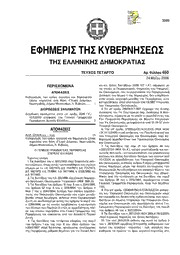
Objective C Memory Management Essentials PDF
Preview Objective C Memory Management Essentials
Objective-C Memory Management Essentials Table of Contents Objective-C Memory Management Essentials Credits About the Authors About the Reviewers www.PacktPub.com Support files, eBooks, discount offers, and more Why subscribe? Free access for Packt account holders Preface What this book covers What you need for this book Who this book is for Conventions Reader feedback Customer support Downloading the example code Errata Piracy Questions 1. Introduction to Objective-C Memory Management Why do we need memory management in Objective-C? An object’s ownership and life cycle Ownership of object and reference counting What’s a memory leak and why pay attention to it? What is an object within Objective-C? Summary 2. Automatic Reference Counting What is ARC and how does it work? How ARC looks Project settings for ARC A memory model in Objective-C What you need to know about ARC and weak references Summary 3. Using Autorelease Pools Understanding the autorelease pool mechanism Autorelease pool mechanism Reducing peak memory footprint with autorelease pool blocks An overview of Apple autoreleased classes NSRunLoop NSException ARC and autorelease Autorelease pool blocks and threads Summary 4. Object Creation and Storage Creation and initialization of objects What is a class? Classes Object immutability Object mutability Inheritance Convenience initializers An Objective-C programmer’s responsibility The singleton pattern Creating @property Creating custom methods String formatting Summary 5. Managing Your Application Data Device memory Image optimization Lazy loading Control creation Caching SDWebImage Object serialization SQLite SQLite versus Core Data Summary 6. Using Core Data for Persistence Why use Core Data? Understanding Core Data concepts Putting it into practice Getting into the code Saving data into the persistent store Deleting data from the persistent store Updating data Summary 7. Key-value Programming Approaches What is key-value coding or KVC? The NSKeyValueCoding protocol Compliance of attributes and one-to-one relationships Compliance of indexed one-to-many relationships Compliance of unordered many-to-many relationships Advantages of key-value coding Disadvantages of key-value coding Manual subsets of NSKeyValueCoding behavior Advantages of creating your own lookup path Disadvantages of creating your own lookup path Associated objects Advantages of using associated objects Disadvantages of using associated objects Selectors as keys Advantages of using selectors as keys Disadvantages of using selectors as keys Maximum flexibility and handling unusual keys/values Advantages of doing your own implementation Disadvantages of doing your own implementation Key-value observing Implementing key-value observing Performance considerations Summary 8. Introduction to Swift Welcome to Swift Basics of Swift Variable declaration Iterating statements Conditional statements Functions Classes and structures in Swift Closures Memory management in Swift Summary 9. Memory Management and Debugging Memory leaks Strong/weak references Retain cycles Memory overuse Using the debugger and breakpoints Collecting data on your app Plumbing memory leaks Using the LLVM / Clang Static Analyzer Using NSZombie Summary 10. Tips and Tricks for Memory Management Objective-C, C, and memory management Getters and setters The property attribute in Objective-C Performance guidelines Don’t overthink about memory management When to avoid KVC and KVO Summary 11. Features of Xcode 6 Introducing Xcode 6 What’s new in storyboard Allowing storyboard or the NIB file to replace launch images Launching images from your app Universal storyboards Debugging in Xcode 6 Debug gauges What’s new in Interface Builder Playground for Swift Summary Index Objective-C Memory Management Essentials
The list of books you might like

Do Epic Shit

Shatter Me Complete Collection (Shatter Me; Destroy Me; Unravel Me; Fracture Me; Ignite Me)

The 48 Laws of Power

$100m Offers

Ram Accelerators: Proceedings of the Third International Workshop on Ram Accelerators Held in Sendai, Japan, 16–18 July 1997

Burgen und Schlösser Natur aktiv Tag der Franken

NSLM Newsletter - Winter 2006

ES 4755: GENERAL REQUIREMENTS FOR SAFETY OF LAMP CONTROL GEAR

Annamaachchaaryarin Kiirttanaikal’

The Australian and New Zealand Journal of Surgery 1993: Vol 63 Index

Tirun-et’un-taand-t’akattil Akapporul’

International Political Science Review 1993: Vol 14 Index

Bürgerliches Recht für Betriebswirte: Allgemeiner Teil — Schuldrecht — Sachenrecht

Plant Science 1993: Vol 93 Table of Contents
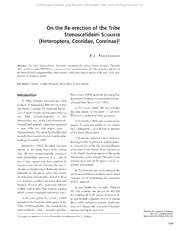
On the Re-erection of the Tribe Stenoscelideini SCHAEFER (Heteroptera, Coreidae, Coreinae)

Zur Synonymie westpaläarktischer Miriden (Heteroptera)
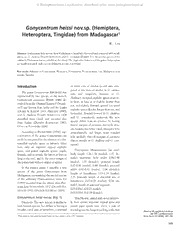
Gonycentrum heissi nov.sp. (Hemiptera, Heteroptera, Tingidae) from Madagascar
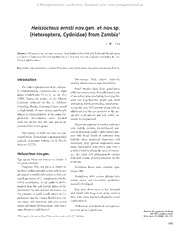
Heissocteus ernsti nov.gen. et nov.sp. (Heteroptera, Cydnidae) from Zambia
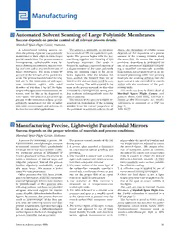
NASA Technical Reports Server (NTRS) 20100014086: Automated Solvent Seaming of Large Polyimide Membranes
